Engineering Procurement Software
Purpose-Built for Complex Procurement
Manage procurement for multiple Engineering projects for one or many clients within a single software. Completely segregated project data and unrivaled customization for each project.
Current SCM offers segregated access for multiple paying organizations, limitless client-specific customizations, and the ability to choose which party ‘owns’ the Order.
All technical data readily available at the Order line-level, including detailed metadata from the catalog, specs and standards, required documents, inspection requirements, and more!
Cloud-Based, Project-Driven EPCM Software
Engineering Procurement Software Built by Engineering Professionals
Current SCM can relate to Engineering supply chain management challenges because it was developed by our parent company, a world class employee-owned Engineering firm with 40 years of execution experience.
Current SCM offers a project-centric approach to Procurement & Materials Management, including the flexibility to manage procurement for multiple projects within a single software with unrivaled project-specific flexibility for each project. Current SCM is loaded with tools to support the procurement of highly technical materials and services, including centralized procurement catalog management and both Vendor Document Requirements (VDR) & Materials Management uniquely integrated into the Order. And with robust data segregation capabilities and support for multiple paying organizations, Current SCM enables third party procurement for multiple clients within a single software.
Whether working within an EPC or EPCM contract, an Owner’s Engineering Representative (OER) contract, or a Consulting Engineer contract, Current SCM is an absolute game changer for Engineering, Procurement, and Construction projects.
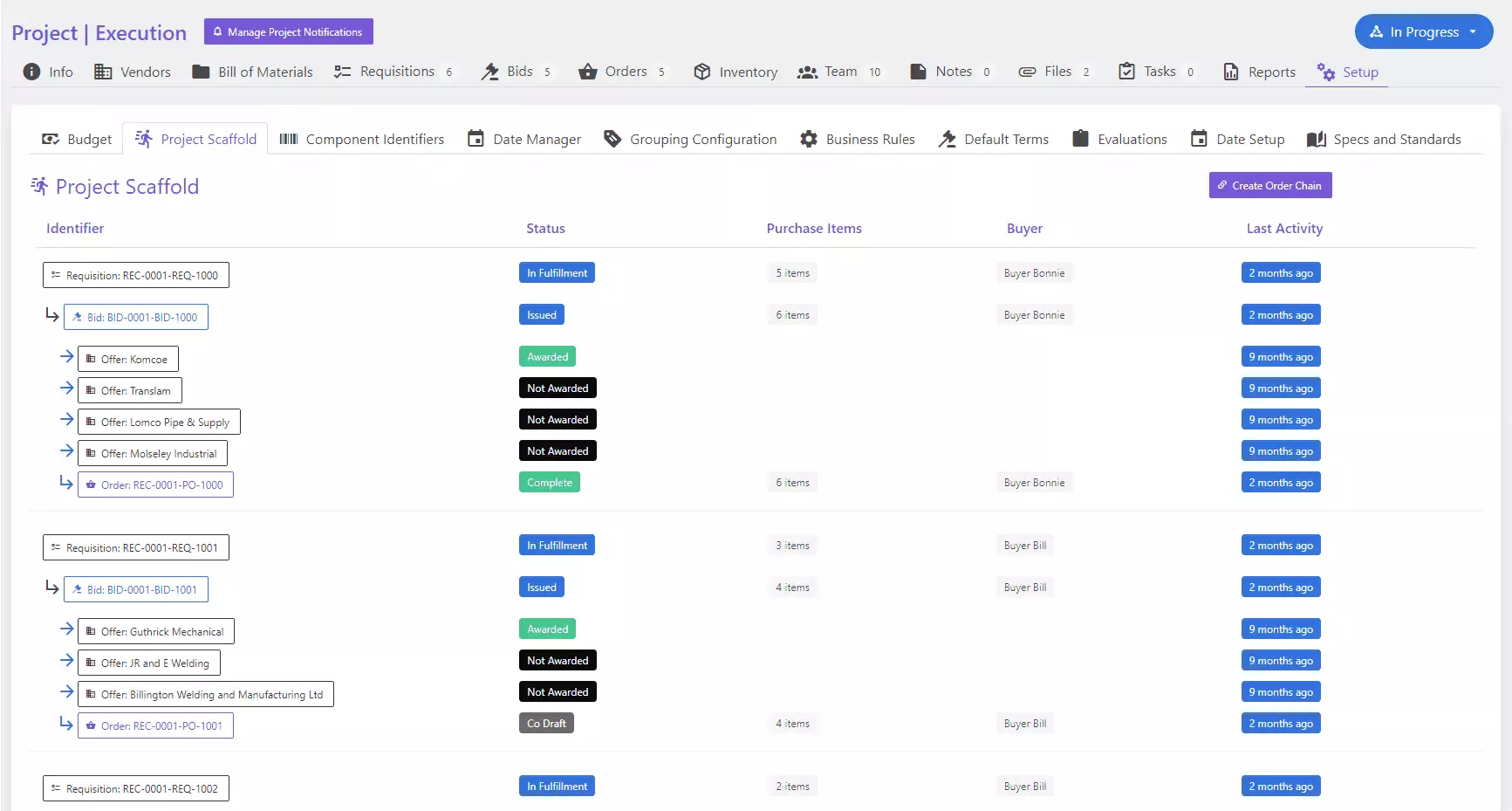
Unrivaled Project-Specific Flexibility
Every EPCM project is unique. Project Procurement management requires flexibility, which is precisely what Current SCM provides. Current SCM excels in accommodating diverse project requirements with unrivaled project customization options, including project-specific teams, approved vendors, locations, budgets, milestones, cost structures, workflow assignments, bid evaluations, terms, reports, and much more! From material requirements planning to final inspection, Current SCM offers convenient cloud-based access to real-time supply chain data to ensure informed decisions, expedite action, and keep your projects on time and on budget.
Manage Procurement for Multiple Clients Within a Single Software
Third Party Procurement also requires flexibility. It starts with the flexibility to manage procurement for multiple clients within a single software, each client with their own exclusive access and data segregation. It includes client-specific business rules & workflows to progress Orders through client approval stages. And it includes the flexibility to adapt to the unique needs of each client’s business.
Give your client direct, real-time access to the project with the confidence of a single source of truth for your procurement execution.
Streamline Engineering procurement management with Current SCM.
Engineering Procurement Software Key Features
Unrivaled Project Customization & Control
To accommodate the unique requirements of each Engineering project, Current SCM offers unrivaled project customizations, such as project-specific teams, roles & permissions, approved vendors, locations (e.g., bill to, destination, store at, fabricate at), budgets, milestones, currencies, tax structures, business rules, chain of orderables, workflows, bid evaluations, payment terms, contract terms, documents numbering rules, vendor evaluations, vendor diversity types, IncoTerms, release terms, inventory, reports, and much more!
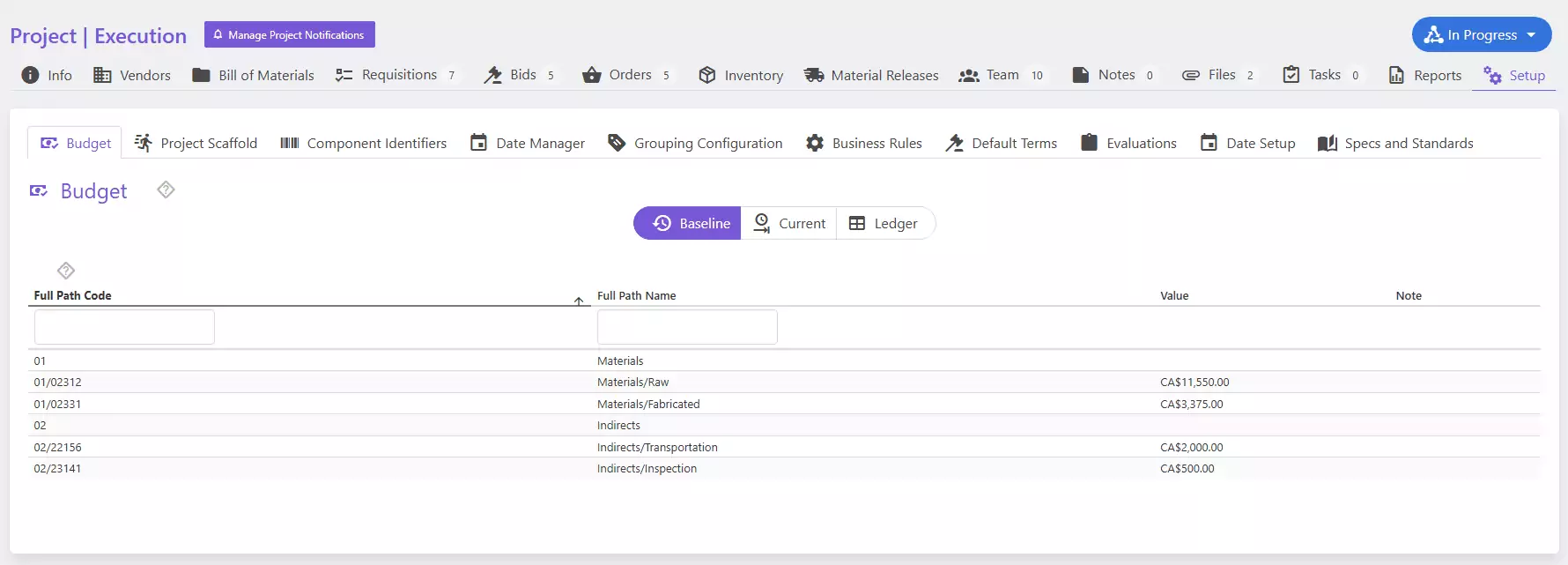
Manage Multiple Paying Organizations
If your organization purchases or acts as an agent on behalf of other organizations, this is a game changer. Current SCM was designed with the flexibility to include multiple paying organizations.
- Each organization can have its own segregated team, cost structure, payment terms, contract templates, document numbering rules, business rules, workflows, catalog(s), approved vendors, inventory, reports and much more, all within a single instance.
- Orders can be issued with your clients’ information and logo, or with your organizations’ information and logo.
- If there is more than one paying organization, Orders can be issued from the joint venture to share the cost.
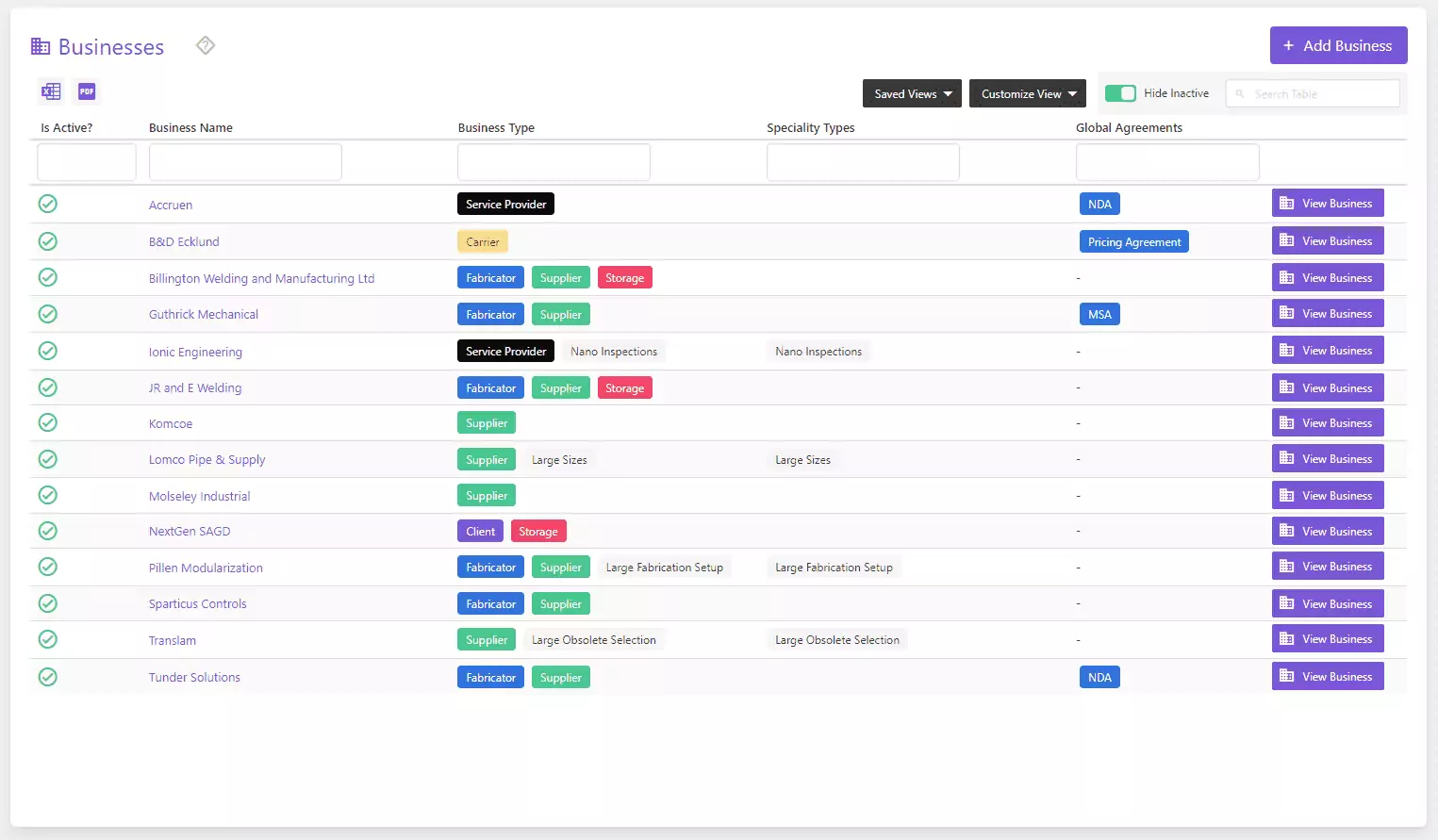
Two-Level Role-Based Access Control
Project visibility isn’t a given in Current SCM. Users must first be added to Teams. Each User can be added to multiple Teams. Each User can be assigned one or multiple Roles per Team, including different Roles and permissions per Team. Each User can also be assigned one or multiple custom permissions at the Team level.
Team members must then be added to specific Projects to access information related to those Projects. Each Team member can be added to multiple Projects. Each Team member can be assigned one or multiple Roles per Project, including different Roles and permissions per Project. Each Team member can also be assigned one or multiple custom permissions at the Project level.
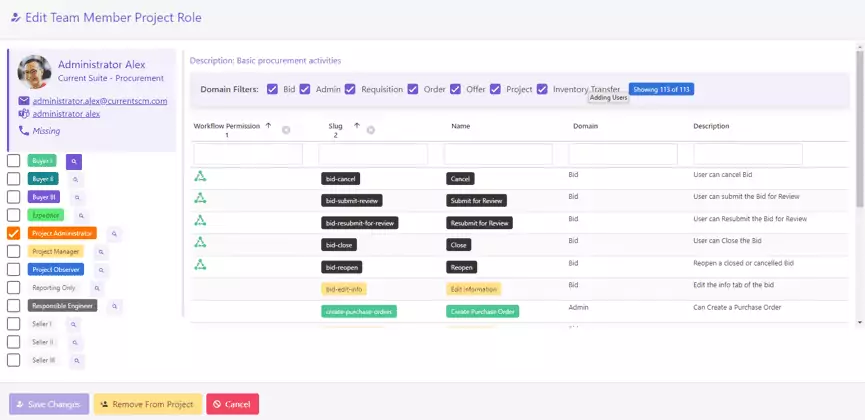
Guide Purchasing of Technical Items with Centralized Procurement Catalog Management
When purchasing highly technical goods and services, it is in an organization’s best interest to put guidelines or controls in place. Current SCM’s highly flexible procurement-centric catalog toolset provides several options to help guide or control your purchasing.
- An example to help guide purchasing would be to create a structured catalog complete with well-defined descriptions, precise measurements & attributes, and detailed metadata to provide Buyers with the information they need to make the right purchase.
- An example to help control purchasing would be to create a business rule to limit purchasing only to Catalog Items that have been approved for use.
BOM’s at the Project level are mapped to the centralized catalog for flexibility on Order line item names while retaining the catalog control.
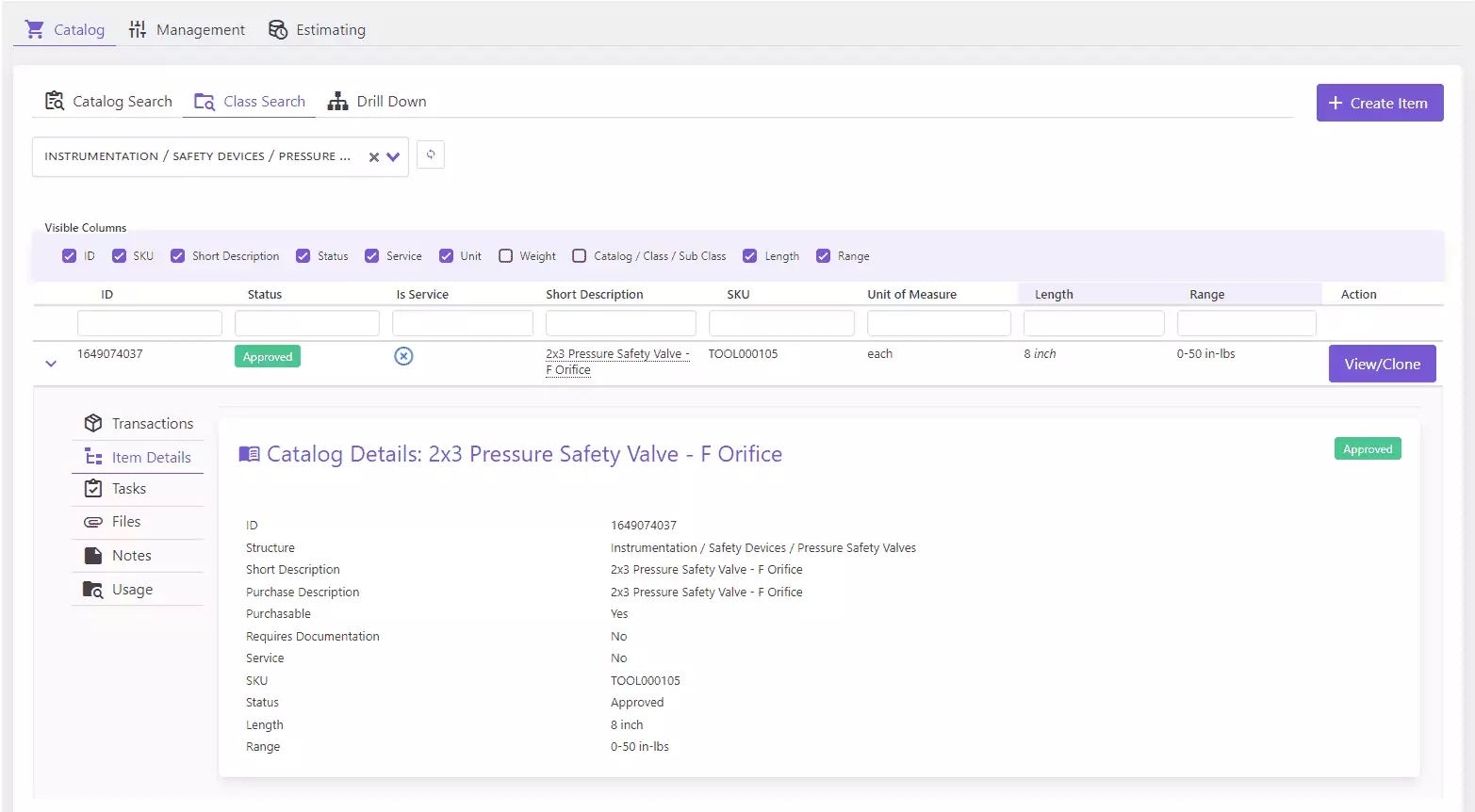
Integrated Vendor Document Requirements
With vendor document tracking uniquely integrated into the Order, Current SCM streamlines the standardization, creation, communication, and tracking of vendor documents.
- Vendor Document Requirements: Define specific vendor document requirements, including the document type, authentication requirements, submission format, and dynamic due date. Define vendor document requirements at the Order or Order item level.
- Order Document Export: Current SCM generates a complete Order document export, including paying organization branded Order, commercial terms, BOM (Bill of Materials), contractual terms, specs and standards, and vendor document requirements. Perfect for integration into you or your client’s EDMS.
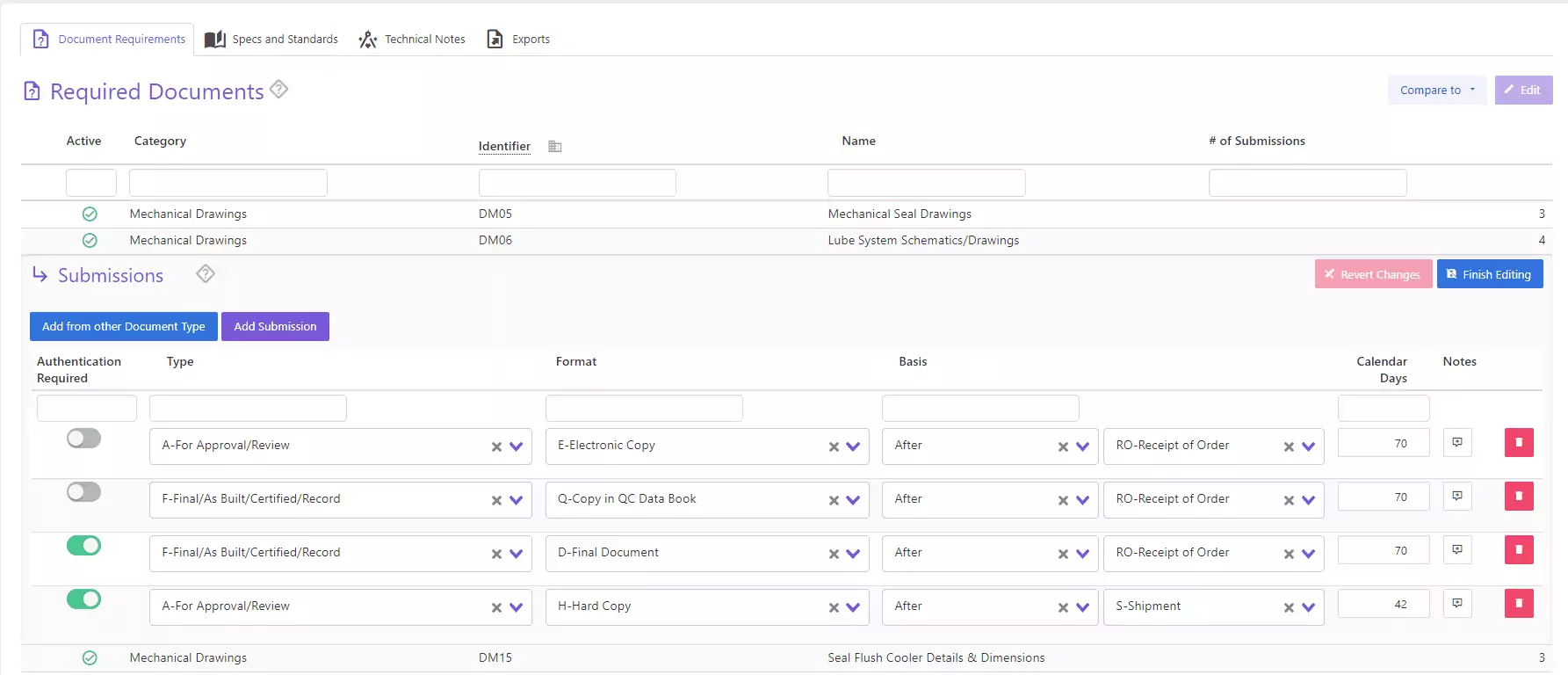
Integrated Materials Management
Current SCM provides complete and flexible materials management support to efficiently manage material through planning, purchasing, tracking, expediting, inspecting, and receiving.
Leverage real-time inventory reporting by project, business, or location to ensure you are optimizing inventory and purchasing only what you require. And when purchasing is required, Current SCM offers material tracking integrated into the Order where you can leverage powerful Order or Order line-level status updates to manage key milestones, monitor delivery schedules, and proactively identify any material shortages or delays.
WIth Current SCM you have the visibility you need to ensure you meet your required on site (ROS) dates!
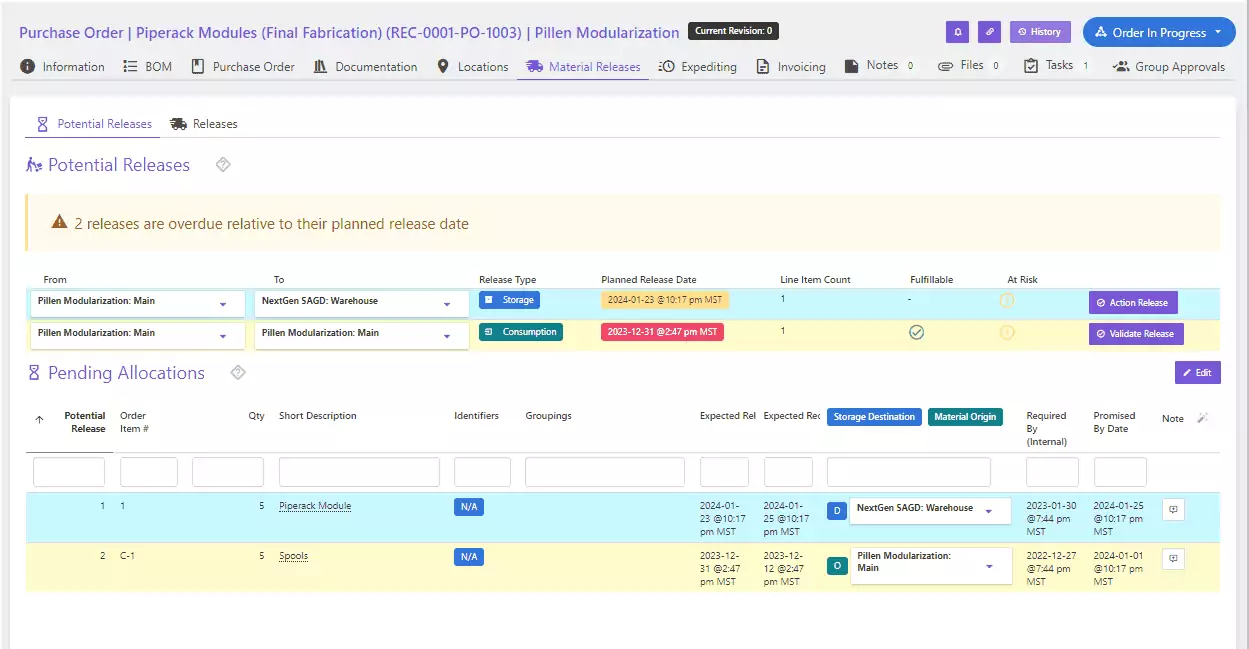
Real-Time Project-Specific Reports
Current SCM offers a project dashboard outlining critical project KPIs, as well as a wide array of customizable, real-time project-specific reports, including:
- Project Cumulative BOM (Bill of Materials)
- Project Budget Report
- Project Dates Report
- Project Completion Report
- Project Over Under
- Project Document Requirements Report
- Project Outstanding Document Submissions
- Project Invoice Aging Report
- Project Inventory Valuation Report
- Project Financial Summary Report
- Project Cost by Code Report
- Project Cost by Diversity Type
- Project Stale Transactions Report
- …and much more!
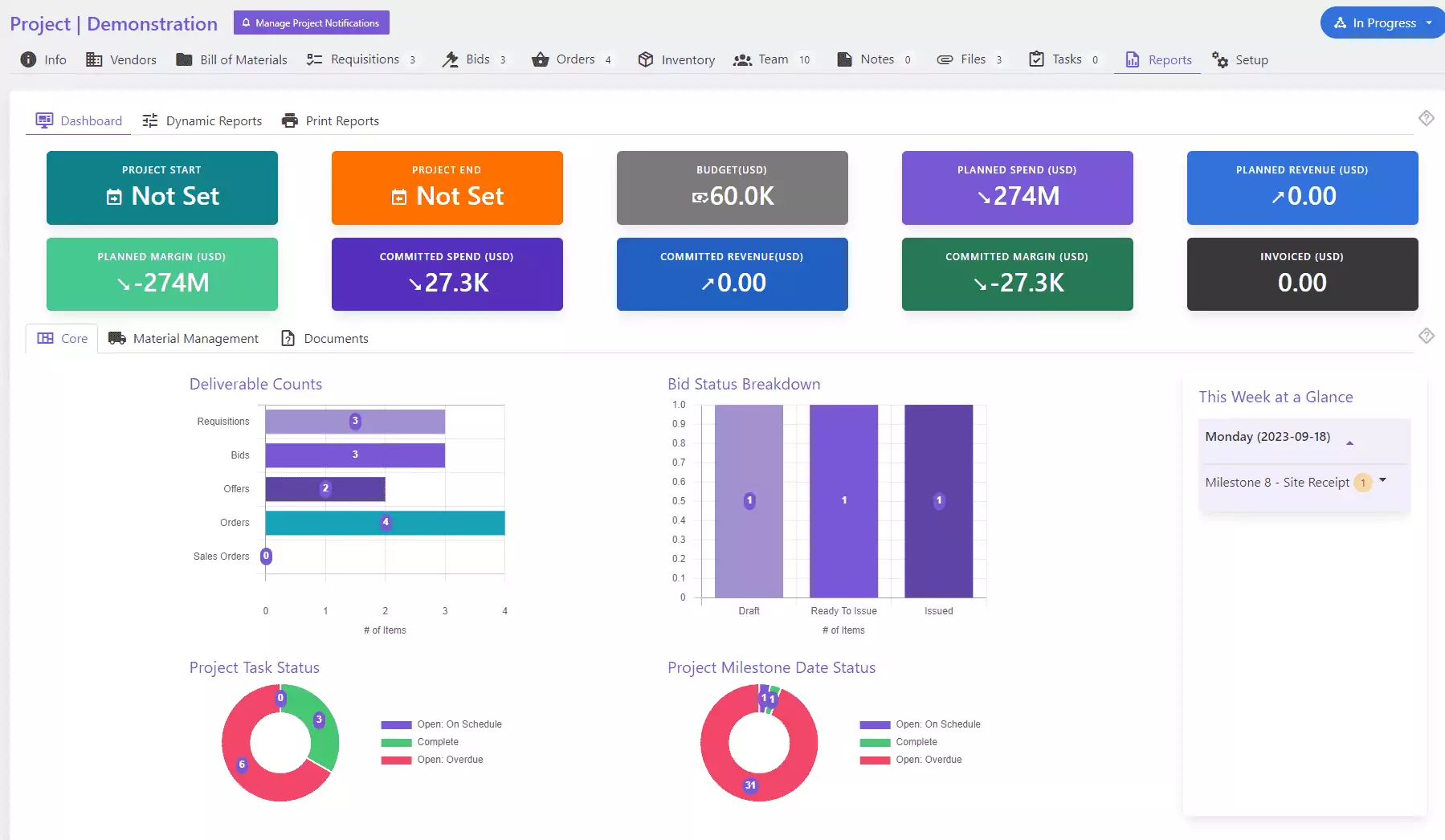
Engineering Procurement Software Highlights
- Cloud-Based Engineering Procurement Software
- Integrated Materials Management
- Integrated Vendor Document Requirements (VDR)
- Two-Level RBAC (Role-Based Access Control)
- Client and Project-Specific Roles & Permissions
- Multi-Project User Management
- Centralized Catalog Management
- 3-Level Structure: Catalog -> Class -> Sub-Class
- Create Multiple Specialized Catalogs
- Supports Multiple Paying Organizations
- Segregated Client Access
- Segregated Client Teams
- Specifications & Standard Drawings Management
- Cumulative Project BOM (Bill of Materials)
- Client and Project-Specific Approved Vendors
- Project-Specific Milestone Dates
- Client and Project-Specific Cost Structures
- Client and Project-Specific Payment Terms
- Client and Project-Specific Contract Templates
- Client and Project-Specific Business Rules
- Client and Project-Specific Workflows
- Bid Comparison Grid
- Project-Specific Bid Evaluations
- Client and Project-Specific Vendor Evaluations
- Client and Project-Specific IncoTerms
- Client and Project-Specific Release Terms
- Client and Project-Specific Receiving Report Term
- Inspection Management
- Non-Conformance Reporting
- Real-Time Client and Project-Specific Reports
- Project-Specific Inventory
- Cross-Project Inventory Transfers
- Project-Specific Asset Management